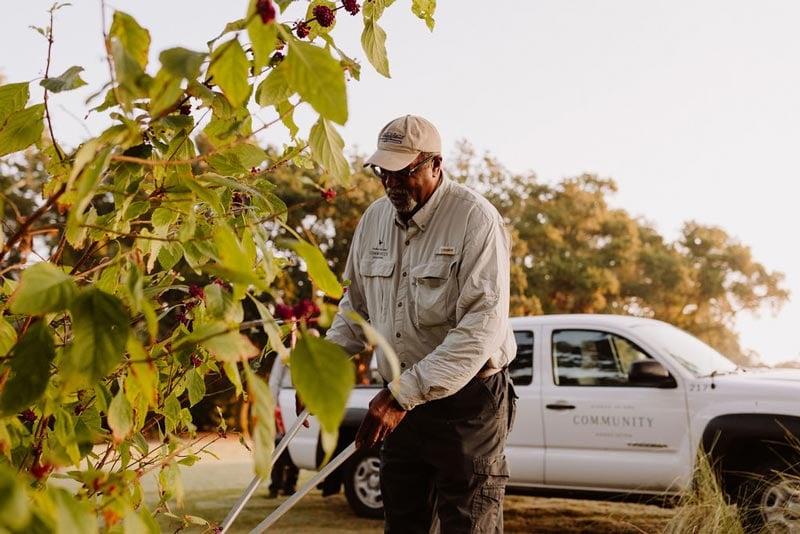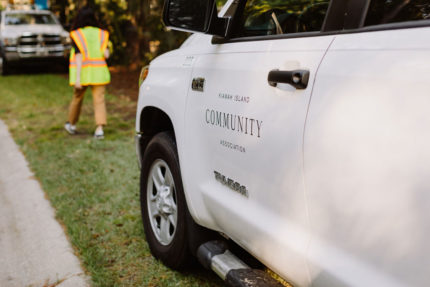Aug
12
2009
From The Blog
Emergency Services On Kiawah: Part 2 Don Lundy And Charleston County EMS
Colonel Don Lundy, director of Charleston County Emergency Medical Services (EMS), is a driven man with a good sense of humor. “I never take myself seriously,” he claims. “Just patient care.” A
graduate of MUSC with a degree in health care administration, he has been working in the EMS field for 35 years. He loves the work, particularly the direct contact with patients and the variety of the job. “I like getting up every morning not knowing what’s going to happen in the next 20 minutes,” he says.
The Charleston EMS district covers 1,100 square miles, including the marshes and rivers, but the daytime population is vastly different from nighttime. “We have 315,000 people at 6 a.m. By 10 a.m., daytime workers from outside the area have swelled the number to 640,000,” he asserts. To address the changeable numbers, Col. Lundy’s team follows a policy of “dynamic deployment.”
The crews for each of the 14 substations move throughout the day as needed. Three additional “prime time” units have no substation assignment; as the crew members report for duty they are sent where they are needed. Col. Lundy remarks, “I think people drive by a fire station and see the trucks and assume when a fire comes in, that is where they will be when they are needed. That isn’t so in EMS.” Col. Lundy’s EMS career began with a private service at $1.60 per hour. After 30 days, the government bought the service and his pay leapt to $3.30 an hour with benefits. “I didn’t even know what ‘benefits’ meant,” he recalls. He started as a dispatcher and worked his way through the ranks, becoming a senior paramedic, a shift supervisor and the director of a helicopter service before landing his first EMS directorship.
Even when he is not working, Col. Lundy is working. “I don’t believe in sitting around,” he says. In addition to a number of leadership EMS and community positions, he enjoys teaching. He is a visiting lecturer at the University of Maryland Baltimore Campus, an Advanced Cardiac Life Support Instructor, and a lead instructor with the National Fire Academy’s EMS program. He and his wife of 35 years have one son, Robert, and are also foster parents. “We have 31 foster children,” he says proudly. He serves on the South Carolina Children’s Foster Care Review Board.
Col. Lundy does have some time for cultural pursuits; he plays the 12-string guitar and sings in the Charleston Men’s Chorus. “I love to sing,” he says. “I’d do it as a career if I could support myself that way- -and was a little better at it.” He is also a scuba diver and is writing a book. “I’ve been working on it for 25 years.”
Including nine years in Charleston, Col. Lundy has been EMS director of three services: “It took me three tries to find heaven,” he says. He explains: “The people I work with truly take their mission seriously. On their worst days and on their best days, the patient always comes first. The people I work for also understand that the patient is more important than where the next nickel comes from. Once I had to leave a budget meeting to help a hurt child because I was the closest EMS responder. No one questioned my leaving. Everyone understands the mission. And there are no turf battles among the various services—fire, hospital, police and EMS. In many places, people are so involved in the politics of their jobs that they forget their mission. Not in Charleston.”
“No one here is afraid to try new things,” he continues. “Some places get bogged down by tradition. Here the focus is on the patient, and not on someone being comfortable in their job. For example, we used to do patient charts on paper, but we decided that there are many advantages to doing them on computer. It was scary, but everyone, even the computer illiterate, agreed to try. We were one of the first systems in the state to do this. We were also one of the first systems in the state to be able to track cell phone locations via 911. Fewer than 30% of systems in the U.S. can track cells.” Perhaps the crowning achievement of Col. Lundy’s long career is a technologically intricate system for transferring data on heart patients from emergency responders in the field to the hospitals. The system has improved patient care and viability. En route to the hospital, ambulance personnel perform a diagnostic level electrocardiogram (EKG) and transmit the results by cell phone to one of the three local hospitals with a heart catheterization laboratory. Col. Lundy was somewhat surprised by the initial response to the idea for this process. “I was able to get three competing hospitals and three different county governments all into the same room and on board with the project. Of course, everyone completely agreed about making patient care better, but I thought there would be more issues. There weren’t.”
The technology for the data transfer is highly complex. “EKG machines are analog and cell phones are digital, and the hospital has to be able to print the results on a printer. The hardest part was making the technology work. We did the training in 2005, and then it took about eight months to work out the technology. We began using it in 2006,” he recalls. Pinpointing the location on the heart of an attack is important because attacks affecting some surfaces of the heart are more dangerous than others. The new “12-lead” technology enables physicians to look at the heart in 12 different ways. “The next upgrade will send the 12-lead report over our own radio system, instead of by cell phone. That will be less expensive and faster,” Col. Lundy reports.
With the cell phone transmission, the hospital “cath lab” can be ready for a patient when the ambulance arrives. “Our door [of the hospital] to catheterization time is 40 minutes in Charleston County. The national average is 90 minutes. In many cases, our time has been less than 15 minutes. Only 25% of hospitals in U.S. have this capability, but we’ve already been doing it for a few years,” he notes.
Paramedics who respond to emergencies rarely learn what becomes of their patients, but the cell phone EKG transmission is changing that. “They see the ‘tombstone T-wave,’ drop the patient off at the hospital, and never see him again,” Col. Lundy explains. “Any time they can see a positive result in a patient, it’s big. Recently, a patient came up to one EMS guy and said, ‘Hey, you’re the guy who brought me in! Thank you.” The paramedic knew he had probably helped save a life.
Digest asked Col. Lundy when a call to EMS is appropriate. He responds, “If you feel something is wrong medically, or if you are just scared about something going on with your health—call 911. I’d rather it be nothing at all than have you wait, be reluctant to bother EMS. We are supposed to be bothered. We want to be bothered.

